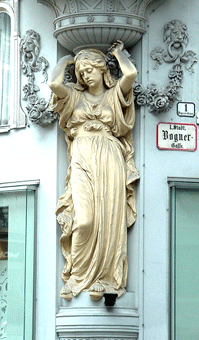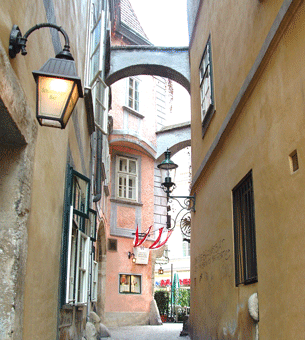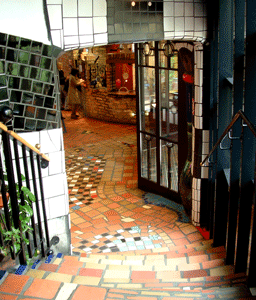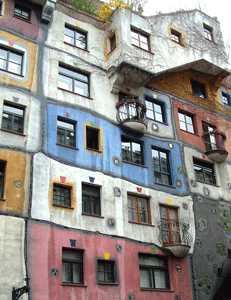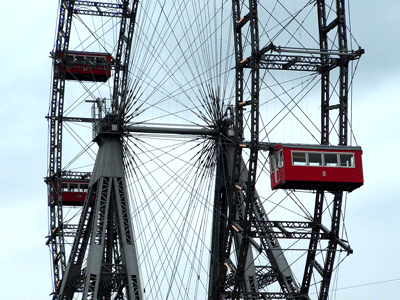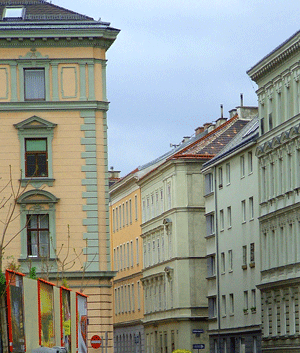 |
|
me wish I read German, stationery shops selling beautiful sheets of wrapping paper in every color, and windows cluttered with antiques.
Outside the Ringstrasse, the city was quiet. Silent buildings lined the streets, their muted facades textured like adobe in the dim gray light. It was like walking out of an impressionist painting, sparkling with sunlight and color, into a soft pencil still life in pale shades of gray. The streets were empty, the shop signs blended in instead of calling out to passers by who weren’t there. One street was like the next, pastel structures blending into gray sky.
My destination was an apartment house and a museum designed by Friedensreich Hundertwasser, a painter and later an architect who grew up in Vienna in the first half of the twentieth century. His buildings seemed to have something in common with Gaudi’s work in Barcelona; no straight edges or corners, ripples and hillocks in the floors, an attempt to create something that feels organic instead of mechanical. The apartment house wasn’t open to the public, but I went into the museum lobby and climbed its staircase, to get a sense of what the space felt like. Nice, comfortable, much more tactile than more conventional space would be. Apparently the apartments are in great |
